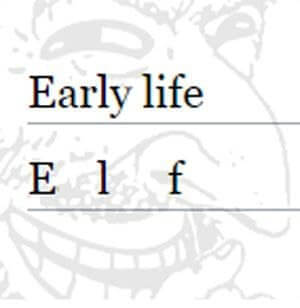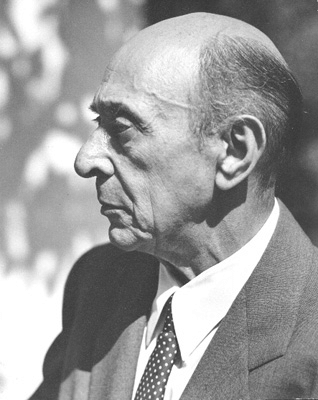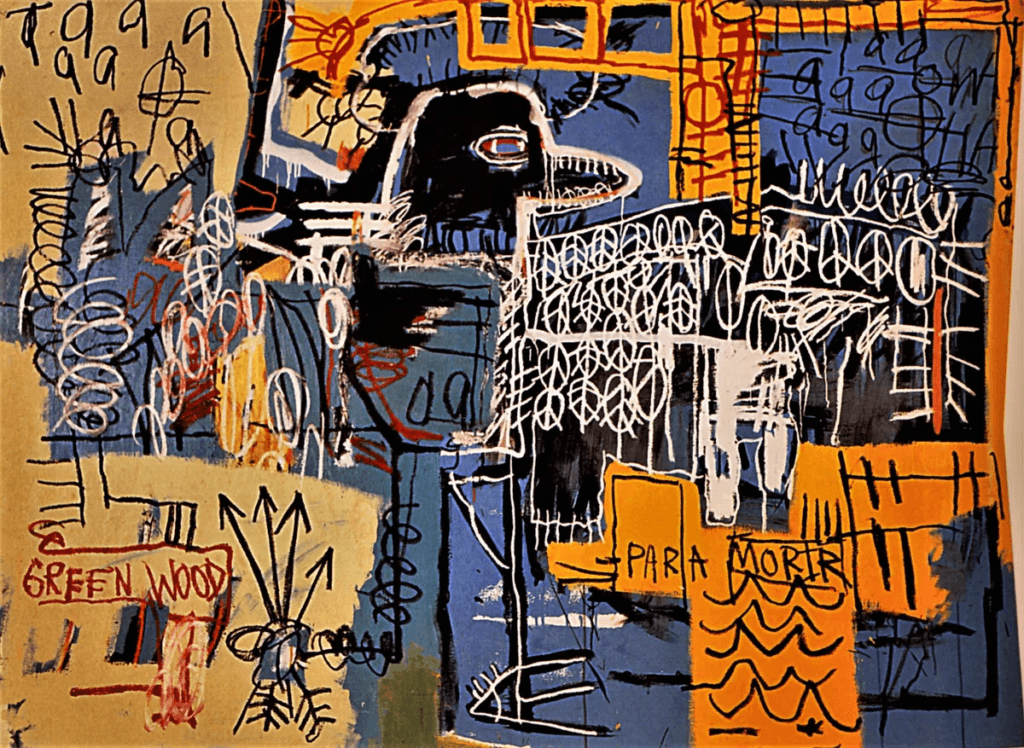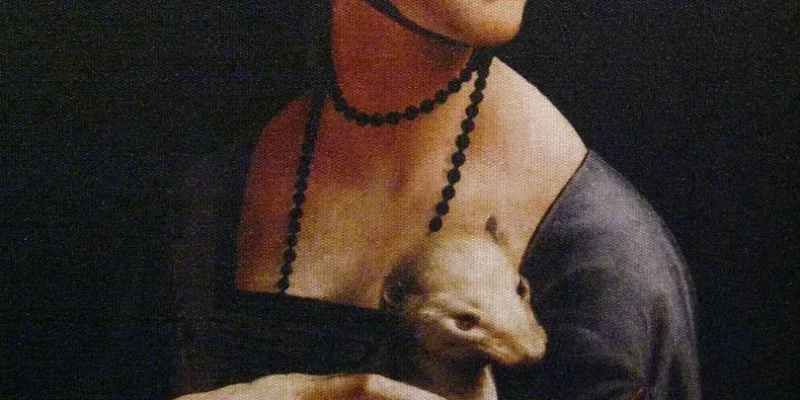In 1975 Tom Wolfe published a small book entitled “The Painted Word” in which he described how influential jew critics had effectively shaped the course of modern art in the West. According to Wolfe, fine art was no longer an accurate and aesthetic visual representation of objects, people and places, but had been transformed by these jew critics into representations of their theories regarding art and its function in society.

This quote, from an article written by the utterly useless artist Douglas Davis in Newsweek the same year the book was published, sums up the premise of Wolfe’s book quite well:
“The main target of Wolfe’s book, however, was not so much the artists, as the critics. In particular, Wolfe criticized three prominent art critics whom he dubbed the kings of “Cultureburg”*: Clement Greenberg, Harold Rosenberg and Leo Steinberg. Wolfe argued that these three men were dominating the world of art with their theories and that, unlike the world of literature in which anyone can buy a book, the art world was controlled by an insular circle of rich collectors, museums and critics with outsized influence.”

*Oy vey. One can only speculate about ethnic background of the “rich collectors”.

Joking, they were all jews.
 The process of fine art being influenced by malevolent outside forces is mirrored in classical music as well as literature and theatre. From the lofty, near-divine heights of Bach, Beethoven and Mozart classical music devolved into atonal theory-driven nonsense during the early part of the the twentieth century. This new music was not meant to be sonorous, harmonious and beautiful but “challenging” (a jew term which can be translated as “ugly”), conceptual and mechanical. The proponents of this new music were largely jews – Arnold Schoenberg “invented” the 12 tone system – and it was quickly taken up by other jews and gullible goyim alike.
The process of fine art being influenced by malevolent outside forces is mirrored in classical music as well as literature and theatre. From the lofty, near-divine heights of Bach, Beethoven and Mozart classical music devolved into atonal theory-driven nonsense during the early part of the the twentieth century. This new music was not meant to be sonorous, harmonious and beautiful but “challenging” (a jew term which can be translated as “ugly”), conceptual and mechanical. The proponents of this new music were largely jews – Arnold Schoenberg “invented” the 12 tone system – and it was quickly taken up by other jews and gullible goyim alike.

Arnold Schoenberg
Schoenberg was championed by “intellectuals” of the Frankfurt School and its adherents, namely the jew Theodore Adorno, and this disgraceful attempt at art became implanted in the United States after Hitler rightly saw the corruption for what it was and the modernist “composers” fled like a herd of cockroaches from Germany in the 1930s. Naturally the Yankee jew embraced this degenerate form and began proselytising young American composers to this new “art” in all US music conservatories.

The creation of twelve tone (or serial) music does not require any great creative ability. It is based on fixed patterns of notes which are modified in various ways to prevent simple repetition of the underlying “tone row”. (If anyone is interested in serial music please contact me an I will be happy to go into detail about it).
Compare the following two pieces. The first is by the French twentieth century composer Pierre Boulez and is an example of “serial music” (i.e. music whereby natural sonorous melody and harmony are supplanted by theoretical nonsense and inhuman mechanism). Notice how the music is deliberately jarring and dissonant with no resolution of tension.
Contrast this with a piece written three hundred years ago by J. S. Bach where melody, harmony and form dictate – producing a piece of music whereby the listener is brought closer to his creator and is allowed a brief look at divine beauty and order.
In literature the timeless beauty, creativity and humanity of Shakespeare, Dante Alighieri and Molière was confronted by the (once again) theory-driven, awkward and prosaic prose pumped out by hacks such as (((Paul Auster))), Salman Rushdie and Maya Angelou. As the quote from Douglas Davis notes, the spheres of music and literature were not as badly affected by the rise of the critic as the fine art world was, but they were affected nonetheless.

Another aspect to this degeneration is the so-called “democratisation” of the artistic spheres in the twentieth century – particularly the post-WW2 period. The best way to explain the growth of the ugly “art” movement can be summed up by a phrase which I am sure some jew social sciences professor has uttered at one point in his career:
“talentless people have a right to make art too”.

Talentless half-Turk drug addict Tracy Emin
Jew-led modern “participation culture,” presupposes that nothing can be objectively beautiful, as objective standards of beauty limit “diversity and inclusion” and therefore bolster White European culture. This has been carefully worked to transform the definitions of “ugly” and “beauty” via the writing and ideas of these jew critics for the best part of a century.
This is driven by a two-fold bitterness inherent in the jew. Firstly with very very few exceptions no jew has been able to compete in the creative sphere against the European and allowing ugly art to grow lets them participate in a culture previously off-limits to them other than as patrons or purchasers. Secondly by promoting sub-standard degenerate ugly art produced by various brown (but also talentless White) people, the jew is also delegitimising the European culture of aesthetics and appreciation of beauty.
Using their total control of the media to promote people who have no business being anywhere near fine art – such as Damien Hirst – and then having jew critics explain to midwits why his art is “important” is just a modern incarnation of the Emperor’s new clothes phenomena.

Talentless White man Damien Hirst
The financial aspect of of art is something which is often overlooked but is arguably as import as the other two factors (jew criticism and fake-inclusivity) in dragging western culture into the toilet. Why is finance important? Obviously rich jews are sponsoring this creation of artistic abominations but aside from this is the concept of “art as investment”.
It has long been understood that fine works of art are, due to their beauty and uniqueness, worth a lot of money. Often they are referred to as “priceless”. Most of the great works of art are indeed literally “priceless”. For example, try offering the French government any amount of money for the Mona Lisa, they will quickly tell you that the painting is not for sale at any price because it is a cultural treasure belonging to the French nation. This scarcity of tradable commodities (or “works of art” to you, goy) has led to the artificial creation of the modern art market.

Rembrandt, The Night Watch (1642)
Unable to access enough truly great and priceless works of European art the jew has invested in the works of talentless art school goyim when they are young, broke, and desperate for income, and has managed (via their control of art criticism, galleries and media) to pump up prices of modern “art” (properly called pieces of conceptual design, and not art) to such a degree that Wall Street retards are paying millions so they can display the childish daubings of the drug-addled nigger Jean-Michel Basquiat on their office walls.

Modern “art”
The modern art market is a Ponzi scheme (and often also a tax write-off money laundering scheme) controlled by jews for the benefit of jews. Excellence and beauty have no place in this surreal parade of the grotesque.
Modern day Leonardos or Breughels are no longer to be found in art schools or New York galleries, but are probably at this moment sitting in their basements playing Fortnite, reading 4chan and drawing monster girls, their excellence never to be discovered by a culture which has been conditioned over decades to praise the ugly and demonize the beautiful. One can only hope this alienation from the modern-day art institutions will have the same effect on these young people as it did on a young Austrian painter over a hundred years ago.

My favourite Austrian painter
















art is a jewish money laundering racket.
That ugly art is a cover art for a “the strokes” album. I always assumed the strokes themselves drew that cover art and they just were musicians, and didn’t have much talent for drawing things. That’s crazy that an actual artist made it.